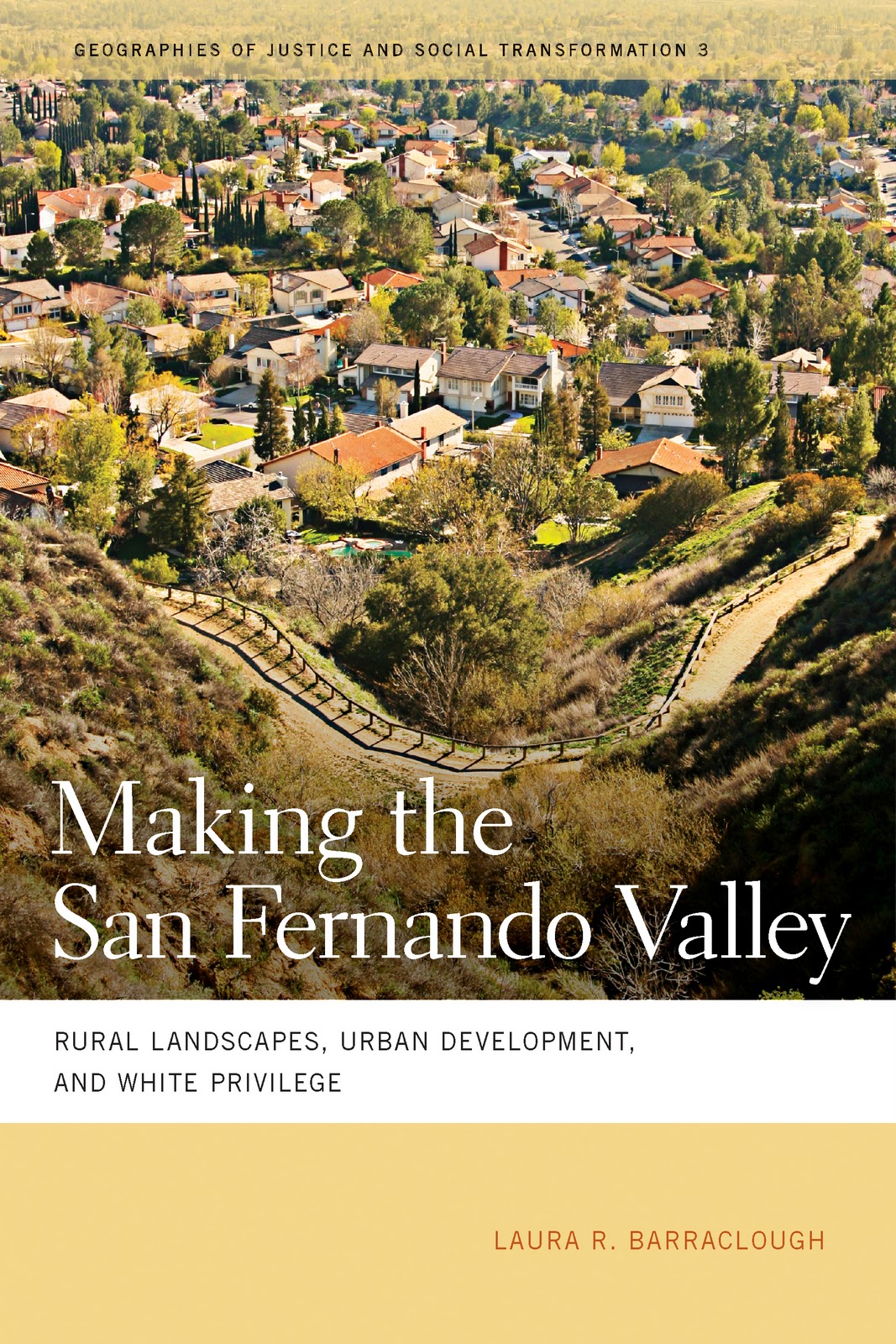Early in her account of the development of San Fernando Valley, Laura R. Barraclough describes an 1880s-era photo that captures the wholesome spirit of what would become Los Angeles’ great bedroom community: “Captioned ‘Lankershim’s best product,’ [it] showed several hundred white children standing in a field, grinning at the camera.”
Jeff Spicoli and Moon Unit Zappa, they are not.
Long before the Valley became a 1980s punch line or even a citrus hotbed, it was first, according to Barraclough, an Aryan sanctuary. Though diversity now reigns in the Valley as it does elsewhere in southern California, Barraclough contends in her new book, Making the San Fernando Valley: Rural Landscapes, Urban Development, and White Privilege, that the Valley was, and still may be, “an explicitly and unabashedly white supremacist place.”
Plenty of places in America are dominated by residents who, for one reason or another, happen to be white. But Barraclough argues that few places were so deliberately crafted for them. As one of the country’s most notable receptacles of 1950s white flight, the Valley rose to prominence not only because of garden-variety paranoia but because of what Barraclough describes as a perverse embrace of the American frontier myth. She recasts Fredrick Jackson Turner’s Frontier Thesis as an ur-narrative that celebrates the pioneer spirit while invoking patriotism to obscure the crimes committed against indigenous peoples and, in California, Mexican settlers.
A professor of sociology at Kalamazoo College (Mich.), Barraclough takes particular issue with one of the great symbols of the frontier—the horse—and with the modern-day persistence of equestrian neighborhoods. Tucked within the Los Angeles’ city limits are Sylmar, Lakeview Terrance, and Shadow Hills (where Barraclough herself grew up). These places continue to nurture what residents describe as a “rural” lifestyle not 15 miles from Hollywood, downtown Los Angeles, and other places where horses appear only on shirt pockets and tailgates. It’s an extreme example of urban sorting according to cultural preferences. But it’s also, implicitly, about racial preferences.
Barraclough focuses on large-animal husbandry not because it is widespread but because it is dishonest . There was never, she argues, a time when the frontier lifestyle appeared organically in the Valley. The early 20th century the Valley’s many “movie ranches” stood in for parts of the American West where standoffs between sheriffs and outlaws might actually have taken place.
Real estate developers circulated fake histories of the Valley that made it out to be a wholesome place of homesteading and rugged individualism. They thus confused the Valley with the character that it played in the movies. In addition to endorsements from fake heroes like Gene Autry and Roy Rogers, one booster went so far as to promote the Valley as the “white spot of America,” a noxious phrase that Barraclough invokes repeatedly.
Though that propaganda has, thankfully, been forgotten, Barraclough contends that residents still ascribe to a galloping sort of nostalgia. By keeping horses in their backyards—within the limits of the nation’s second-largest city—residents perpetuate a “fantasy past.” This fantasy, unlike most, requires not only bales of hay but also some serious pieces of real estate in which to run around.
The northeast Valley’s remaining “horse-keeping zones” are supported by no fewer than 12 Los Angeles city ordinances enacted between 1963 and 2006. Barraclough excoriates the public officials who, she claims, pander to the mostly white populations by supporting the zoning regulations and other laws that that venerate these domesticated cowboys and implicitly exclude minorities. There aren’t any Jim Crow laws, of course. But large lots, large houses, and a curious pastime “reproduce whites’ historical racial, class, and economic privileges,” writes Barraclough.
Horses, of course, don’t vote. If planning provides the foundation and legal sanction for certain landscapes, then the planners and politicians who govern Shadow Hills are not just supporting a storybook lifestyle. They too are perpetuating stereotypes and injustice. Barraclough writes that urban policy itself “reinscribe[s] the central elements of the frontier narrative in physical landscapes throughout twenty-first century America.”
These conclusions come by way of maddeningly detailed research. Barraclough combs through public documents, attends community meetings, and even lurks on Internet message boards that celebrate this latter-day ruralism. All the while, she is deeply influenced by a mountain of post-structural theory, which casts almost every cultural expression as a power conflict. As a result, Barraclough’s account often lapses into tedium as she demonizes every clop and whinny of horse ownership.
Barraclough’s writing rarely rises above that of an expanded dissertation. Her allegations, therefore, are likely to be lost to everyone other than like-minded scholars who have heard many similar arguments about other places. So, let’s be clear: You might not read Making the San Fernando Valley. But the next time you visit – or build – a place that celebrates a rural ideal, you might think about who is invited to that celebration, and who is not.
You’d have to be pretty vapid—more so, perhaps, than any Valley Girl ever was—to do otherwise.

Making the San Fernando Valley: Rural Landscapes, Urban Development, and White Privilege
Laura R. Barraclough
The University of Georgia Press
2011